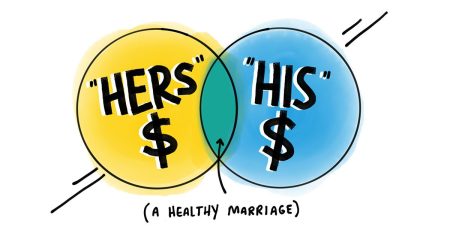Hey, we all know at least one or two people who work for the government—your cousin the park ranger, your neighbor the air traffic controller, your friendly neighborhood mail carrier. Or maybe you have a government job yourself.
What all these people have in common (besides being federal employees) is that they’re able to save for retirement through the Thrift Savings Plan.
The Thrift Savings Plan (TSP) is a retirement savings and investment plan for federal employees and members of the military. It includes the same tax benefits as a 401(k), and many agencies offer matching contributions.
Since the government is the largest employer in the country, it makes sense that the TSP is one of the largest retirement plans in the world, with about 7 million participants and over $856 billion in assets.1
Now, just like saving for retirement with a 401(k) or an Individual Retirement Account (IRA), the key to building wealth with a TSP account is to choose the right funds and invest in them consistently over time. And that can be scary, especially if you’re new to investing. The good news is that with a little information about the TSP and the funds it offers, you can make it work for you.
Let’s dig in, and we’ll show you how.
What Is the Thrift Savings Plan?
The Thrift Savings Plan gives federal workers and military personnel the opportunity to invest in a tax-advantaged account for retirement. Introduced in 1986 as part of the Federal Employees’ Retirement System Act, it works very similarly to a 401(k) plan.
Just like a 401(k), you can have TSP contributions taken straight out of your paycheck, and you can invest that money in a variety of different funds. Contributions also qualify for a match up to 5%. We’ll dig into those fund options and which ones we recommend later.
Who Is Eligible for the Thrift Savings Plan?
To be eligible to contribute to a TSP account, you must be employed by the federal government or be a member of the military. Most federal government employees have access to the TSP, but if you’re not sure, check with your benefits office.
What’s the Difference Between Traditional TSP Contributions and Roth TSP Contributions?
Just like IRAs and many 401(k) plans, TSP accounts have a traditional and a Roth option. These options just determine how your contributions and withdrawals are taxed. You can either pay taxes when you contribute money to your TSP or when you withdraw it. Let’s take a look at both options.
Traditional
With a traditional TSP, you make contributions to your account with pre-tax dollars (which means the money is taken out of your gross earnings and put into your TSP before you pay taxes on it). But you can’t escape Uncle Sam! When you retire and start withdrawing money from your TSP, you’ll have to pay taxes on your withdrawals based on your tax bracket at that time. In other words, you have to pay taxes on your contributions and the growth of your account.
Roth
With a Roth TSP, you pay taxes on your money before it goes into your account. So, this will cost you a little more in taxes when you make your contributions. But here’s the good news: Roth contributions grow tax-free, and that means you won’t pay any taxes on the money you take out when you retire.
Market chaos, inflation, your future—work with a pro to navigate this stuff.
We always recommend going with a Roth option when you have the chance. First of all, there’s the tax benefit. If you still have decades before you retire, there’s no guarantee that tax rates will stay the same. But if you’ve already paid taxes on your contributions, you don’t have to worry about that.
The second benefit is emotional as well as financial. Wouldn’t you rather pay $100 in taxes on a paycheck today instead of paying hundreds of thousands of dollars when you start spending your hard-earned nest egg? All feelings aside, skipping the tax bill in retirement will be huge for stretching your retirement savings.
When you start early with Roth contributions, you won’t even miss the money that goes toward taxes because you’re used to paying it. And then the nest egg you worked so hard to build (contributions and growth) will be all yours in retirement. Hands off, Uncle Sam!
A Mix of Roth and Traditional
You’ll probably get the biggest benefit from making Roth contributions to your TSP, but you can do a mixture of Roth and traditional contributions (though that’s not what we’d recommend in most cases). Keep in mind, any matching contributions you receive from your agency or service are automatically put in your traditional TSP and can’t be converted to Roth.2
What Are the TSP Contribution Limits?
For 2024, the contribution limit for your TSP account is $23,000. If you’re 50 or older, you can contribute an additional $7,500 a year as a catch-up contribution.3
Do You Get a Match on Your TSP Contributions?
Another great part of the Thrift Savings Plan is the match you get from your agency or service on your contributions if you’re part of the Federal Employees Retirement System (FERS) or Blended Retirement System (BRS).
If you’re part of FERS or BRS, your agency or service will automatically make contributions equal to 1% of your pay in your TSP account, even if you don’t make any contributions.4 This 1% contribution is vested over time, which means you usually have to complete several years of service (how long depends on the agency) before you can keep the money.5
On top of the 1% contribution, you’re also eligible for a match up to an additional 4%. You receive a dollar-for-dollar match on the first 3% you contribute and 50 cents on the dollar for the next 2%. So if you contribute 5% of your pay, you can get the full 4% match!6 Another plus? Your match is immediately vested, so it’s your money to take with you if you find a new job.
Getting a match on your contributions is free money! That’s why it’s important to invest at least enough to get the match. Most TSP participants are on top of it: More than 8 out of 10 (86%) put in at least 5% of their pay to get the full match.7
Keep in mind that the match your agency or service puts in your account is classified as a traditional contribution that will be taxed in retirement.
Ramsey Solutions is a paid, non-client promoter of participating pros.
How Much Should You Invest in a TSP Account?
Listen, the 7 Baby Steps are the proven plan that millions of people have followed to pay off debt and save for retirement. Once you’re debt-free (except for your house) and have a fully funded emergency fund of 3–6 months of expenses in place, you start Baby Step 4, which is investing 15% of your income for retirement.
When you contribute 15% consistently, you set yourself up to have options when you retire. You also leave enough margin in your budget to make progress on other financial goals, like saving for your kids’ college and paying off your house.
So, what does that look like if you have a TSP? Well, first off, invest enough money in your TSP to get the full match. Don’t leave free money on the table. For most government employees, that’s 5%. So that leaves you with an additional 10% to invest.
Next, work with your financial advisor to open a Roth IRA. With a Roth IRA, you can take advantage of the tax-free growth and withdrawals and choose from more types of mutual funds than the TSP offers. The 2024 contribution limit for a Roth IRA is $7,000 (or $8,000 if you are 50 or older).8
With a Roth IRA, you’ll be able to invest in a mix of mutual funds with average annual returns of 10–12% based on the 30-year return of the S&P 500.9 We recommend dividing your investments equally across these four types of funds: growth, growth and income, aggressive growth, and international.
If you max out your Roth IRA and still haven’t hit 15%, go back to your TSP account and invest the rest.
If, for some reason, you don’t get a match on your TSP contributions, start with a Roth IRA. It’s easy to sit down with an investment professional and talk through your options. They can help you open a Roth IRA and choose the best funds.
What Types of Funds Does the TSP Offer?
The TSP offers five different individual fund options, each one invested in either U.S. Treasury securities, bonds, or U.S. or international stocks.
- The Government Securities Investment (G) Fund
- The Fixed Income Index Investment (F) Fund
- The Common Stock Index Investment (C) Fund
- The Small Capitalization Stock Index Investment (S) Fund
- The International Stock Index Investment (I) Fund
Before we dig into the specifics of these funds and which are the best, let’s talk about the different ways you can manage them. You have two options. You can choose to invest in any of the five individual investment funds. Or you can invest in a Lifecycle fund—a fund that has a preselected ratio of these five individual funds. What’s the difference? We’ll explain.
Lifecycle Funds
Let’s start with Lifecycle funds. A Lifecycle fund, or L Fund, is similar to a target date fund (a fund that’s based on the year you plan to retire). It automatically changes the direction of your investments from high-risk, high-reward to low-risk, low-reward options as you near retirement.
Lifecycle funds include all five individual TSP funds. But the ratio of those five funds adjusts quarterly so your L Fund becomes more conservative as you get closer to retirement. For example, a 2040 Lifecycle fund is for participants expected to retire anywhere between 2038 and 2042.10
Currently, the L 2040 Fund is more aggressive and risky, but it will continue to transition to a more conservative investment mix as participants approach retirement. Meanwhile, the L 2025 Fund is more in protection mode at this point since participants in this fund are closer to retirement.11 Their nest egg is being sheltered from losses—and growth.
Lifecycle funds can seem appealing because once you invest in one, it adjusts automatically. But this is your future we’re talking about! A computer doesn’t know you, your financial situation or your goals for your golden years. That’s why we aren’t a fan of Lifecycle funds or target date funds and don’t recommend them for anyone.
Individual Investment Funds
Investing in the TSP’s individual investment funds is the way to go because you can choose how you want to balance the five fund types. You can even skip the ones you don’t want to have in your portfolio. You have complete control over your investment.
Though these funds are the ones that make up Lifecycle funds, if you invest in them on your terms and according to your needs, you remain in control. The TSP doesn’t offer as many investment options as most 401(k) plans, but you can still choose the right mix to maximize your growth.
What Funds Should You Choose?
Let’s recap. When it comes to selecting which individual investment funds you want in your portfolio, you have these five options:
- The Government Securities Investment (G) Fund
- The Fixed Income Index Investment (F) Fund
- The Common Stock Index Investment (C) Fund
- The Small Capitalization Stock Index Investment (S) Fund
- The International Stock Index Investment (I) Fund
So, which funds should you choose for your TSP account?
First off, stay away from the G and F Funds. These two funds are tied to treasury and corporate bonds. They are low risk but have little opportunity for growth.
Your best bet is to stick with the C, S and I Funds. Here’s the ratio we recommend for your portfolio:
- 80% in the C Fund, which is tied to the performance of the S&P 500
- 10% in the S Fund, which includes stocks from small- to mid-sized companies that offer high risk and high return
- 10% in the I Fund, an international fund that invests in stocks from overseas companies
The idea here is to really focus on the C Fund and then toss a bit at the other two funds.
You can also do a 60-20-20 option—that’s 60% in the C Fund, 20% in the S Fund, and 20% in the I Fund.
Other TSP Investment Options
Starting in June 2022, the TSP began allowing plan participants to invest in thousands of individual mutual funds outside the G, F, C, S and I Funds. But this option is not as cut-and-dried as it sounds.
Investing through the TSP mutual fund window will cost you $150 in annual fees plus $29 per trade. Your initial investment in the mutual fund window must be at least $10,000, and it must come from money already in one of the other funds. You also can’t invest more than 25% of your total account in the mutual fund window or do automatic contributions to mutual funds.12
So listen, the mutual fund window is pretty labor-intensive, but if you want to move funds once a year or every other year, it might be a fun, nerdy exercise. Look for individual funds in the small cap or international categories that have outperformed the S and I indexes for over 10 years, and move your money from there. Because C has performed well over the years and is a much larger portion of your investments, just leave it alone.
If you want more information about the funds in the TSP, sit down with an investing pro. They can help you make investment choices based on your situation while also keeping your whole retirement picture in mind.
Read the full article here










